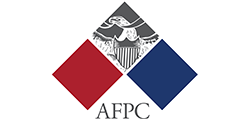What does the friction between Russia and Turkey mean for Armenia?
By Eduard Abrahamyan
December 3rd, 2015, The CACI Analyst
The Turkish Air force’s downing of a Russian Su-24 warplane on November 24, has deteriorated relations between the two states, already tense after Russia’s increasing military engagement in the Syrian conflict. The incident represented the first direct clash between Moscow’s and Ankara’s interests in the Middle East and could potentially extend the geography of the enduring standoff between Russia and the West. Yet it has been met in the West with some understanding of Russia’s concerns. Turkey’s response to Russia’s consistent violations of its airspace coincided with an anticipated accord between Armenia and Russia on the establishment of a joint missile air defense system that will be deployed during a visit of Russia’s Prime Minister Dmitry Medvedev and Minister of Defense Sergey Shoygu to Yerevan.
Azerbaijan's and Armenia's presidents discuss gas trade in Tbilisi
By Mina Muradova
November 30th, the CACI Analyst
In recent weeks, a political controversy has emerged in Tbilisi over the Georgian government’s negotiations with Gazprom over a return of the Russian natural gas giant to the Georgian market. Georgian officials insist there is no intention to replace gas imports from Georgia’s main supplier Azerbaijan with Russian gas, but Georgia’s own experience of dependency on Gazprom makes the issue highly controversial.
Armenia debates reasons for Turkish helicopter's airspace violations
By Erik Davtyan
November 12th, the CACI Analyst
On October 6 and 7, Turkish military helicopters entered Armenia’s airspace near the village of Baghramyan in the Armavir region and remained for 2-4 minutes. The Head of Armenia’s General Department of Civil Aviation, Artyom Movsesyan, confirmed the violation in an interview to the Hraparak daily and said that Ankara’s explanation was that the helicopters had crossed into Armenian air space due to bad weather conditions. The Armenian-Turkish border has been closed for over 20 years (since 1993) and though the situation along the border is usually secure and calm, rare incidents on or near the border raise deep concerns in Armenia.
Economic models of Eurasianism and the Eurasian Union: why the future is not optimistic
By Vladimer Papava
October 29, 2015, The CACI Analyst
A new Russia-Kazakhstan regional project, named the Eurasian Economic Union (EAEU), was launched in 2015. Specifically, as of January 1, 2015, integrated economic processes among Belarus, Kazakhstan and Russia are governed by the EAEU Treaty. As of January 2, Armenia joined the EAEU and as of May 21, Kyrgyzstan also became a member. In 2011, after the President of Russia declared the establishment of the Eurasian Union, some politicians and experts perceived it as a final victory of Eurasianism ideology in Russia. Under such circumstances, there is a need to analyze the economic models of Eurasianism and the Eurasian Union for a better understanding of their future.
Armenian delegation visits U.S.
By Erik Davtyan
October 16th, the CACI Analyst
Between September 27 and October 1, an Armenian delegation headed by President Serzh Sargsyan paid a five-day working visit to the U.S. The main item on the agenda was the 70th session of the UN General Assembly, and the visit also included meetings with high officials representing different states, the OSCE Minsk Group Co-Chairs, representatives of Armenian diaspora, and UN officials.







